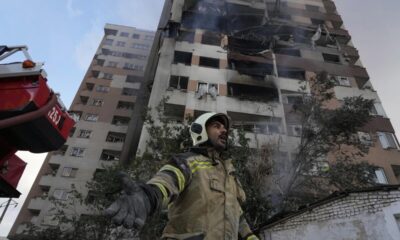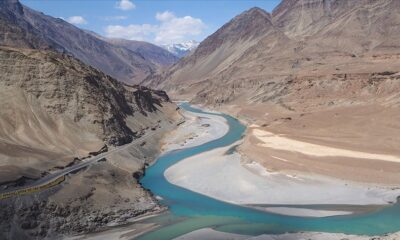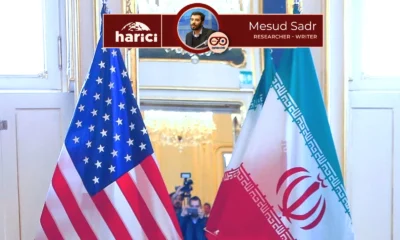Middle East
Afghanistan-Iran cross-border tension: Who to blame
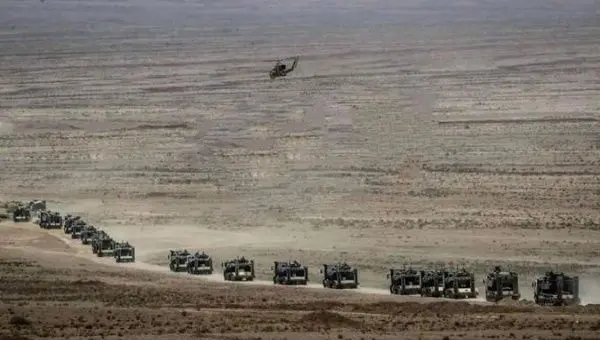
Afghanistan and Iran troops have engaged in heavy cross-border clashes, killing and wounding troops in rapid escalation of tensions over water rights.
At least two Iranian border guards and one Taliban member have lost their lives in the battle and several other people received injuries.
There is no immediate indication of what had provoked the incident, but recently Iran’s leader threatened the Taliban amid tensions between the two countries over water rights.
The deadly clashes happened on the border of Iran’s Sistan and Baluchestan province and southern Afghan province Nirmoz. Authorities from both sides confirmed the clashes had subsided and the two neighbors engaged in talks to ease tensions. Both sides accused each other of firing first.
Spokesman for the Taliban Interior Ministry Abdul Nafi Takor said that Iranian border forces fired toward Afghanistan first, which faced a counter-reaction by the Taliban border forces.
Takor said that the situation is now under control, and the Islamic Emirate does not want to fight with its neighbors, but prevent mentioning the name of Iran.
Iran‘s Deputy Police Chief, Qasem Rezaei blamed Taliban forces for firing first at the Sasoli checkpoint which caused a decisive response. Rezaei charged the Taliban forces for not observing intentional laws and neighborliness.
No room for aggression
A Taliban commander, Abdul Hamid Khorasani called on the Iran leadership not to play with the patience of the people of Afghanistan and the government.
“We are not slaves of the colonialists and we won’t tolerate your aggressions,” Khorasani said, referring to Iran’s border firing toward Afghanistan.
In a message sent to Harici, Khorasani said that the Taliban security forces will not tolerate any kind of “aggression” and warned Iran of a “deadly response” if a single bullet fired toward Afghanistan.
“Our leadership had shown restraint, otherwise we were ready to fight against Iran with more passion and even greater than our fight against the NATO occupiers,” he added.
In a clear word, he said that they will conquer Iran if the leadership in the Islamic Emirate allow them to wage Jihad against Tehran, and also accused Iran of being a good friend to the Western countries.
But, Taliban defense ministry spokesman, Enayatullah Khowarazmi said that Kabul considers dialogue and negotiation to be a reasonable way to address any problem.
He said that blaming games and negative actions is not in the interest of either side.
Iran decisively responses to any aggression
Iran had vowed not to let the Taliban attack stand, and said that its border forces have been alert 24 hours to respond in a harsh way to any cross-border aggression.
Iran’s Police Chief, Ahmadreza Radan said that the border forces will “decisively respond” to any border trespassing and aggression and blamed the Taliban leadership for the border skirmishes.
Iran’s deputy head of the police force, Qassem Rezaee said that the Taliban started shooting with all kinds of weapons at an Iranian police station.
Light and semi-light weapons and artillery were used in the clashes, according to the official Tasnim news agency.
The escalation comes after Iranian president Ebrahim Raisi during his visit to Sistan-Baluchistan on May 18, warned Taliban leadership to give the people of Sistan their water rights.
He also warned the Taliban to take his words “seriously” and called on Kabul to observe Iran‘s water rights under the 1973 treaty. However, the Taliban rejected Raisi’s perceived threat.
Water, the real cause of dispute
Tensions over water rights have risen between Iran and Afghanistan in recent weeks, where Iran accused Afghanistan for blocking the flow of water and called for the release of more water.
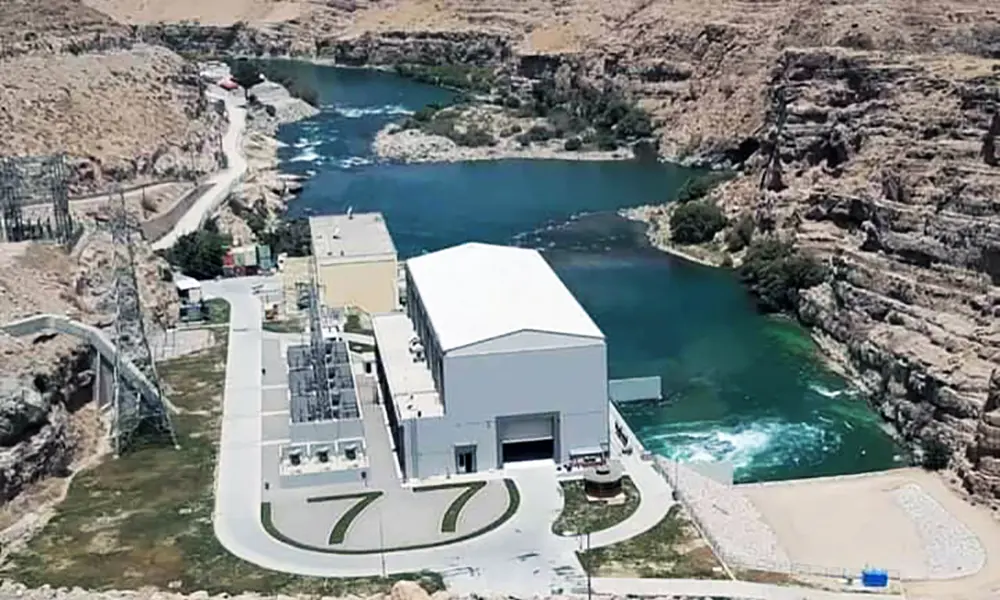
Kajaki Dam on the Helmand River, Afghanistan.
The Taliban had repeatedly denied violation of the agreement, and said low water levels on the Helmand River and rejected the preclude of water flows to Iran’s southeastern Sistan-Baluchistan province.
Iran has been struggling with drought for some 30 years, but has worsened over the past decade, according to the UN’s Food and Agriculture Organization.
Meanwhile, Iran’s Meteorological Organization said there is an estimated 97pc of the country that now faces some level of drought.
The Taliban seized Afghanistan in August 2021 as U.S. and NATO troops were in the final weeks of their pullout from the country after 20 years of war.
While not directly accepting the Taliban government, Iran has maintained relations with Afghanistan’s new rulers. Tehran also has called on the Taliban to allow women and girls to go to school.
Diplomacy didn’t work
Iranian Foreign Minister Hossein Amir-Abdollahian had earlier spoken on a phone with his Afghan counterpart Amir Khan Muttaqi and asked for the reopening of the gates of the inland Kajaki Dam on the Helmand River, and let the people on both sides be hydrated.
Right after the call, Muttaqi held a meeting with Hassan Kazemi Qom, the Iranian ambassador in Kabul, where they discussed issues of bilateral relations, including water issues.
“The minister of foreign affairs also noted that issues between the two sides can be better resolved through mutual dialog and understanding,” Afghan Foreign Ministry’s deputy spokesman said on Twitter.
Muttaqi had earlier said that Taliban remains committed to the 1973 treaty, but said that drought in Afghanistan and the region should also not be ignored.
Afghanistan has been facing its third year of drought, and has been ranked third on a 2023 emergency watch list issued by the International Rescue Committee.
On May 22, the Taliban foreign ministry called on Iran to prevent talking about water in the media and instead engaged in talks directly with Kabul to find a local solution to the problem.
It was the first deadly clashes between the border forces of Afghanistan and Iran since Taliban took control of the country in 2021.
Middle East
Trump’s envoy Tom Barrack issues warning to Lebanon over Hezbollah disarmament

US President Donald Trump’s special representative, Tom Barrack, has called on the Lebanese government to swiftly implement reforms and disarm Hezbollah. Barrack emphasized that despite Trump’s strong support for Lebanon, his patience is limited.
Speaking from Beirut on his second visit within a month, Barrack stated, “There hasn’t been a president since Dwight Eisenhower who has acted with such determination for Lebanon.” He added, “Trump has courage, determination, and ability. But he has no patience.”
In 1958, then-US President Dwight D. Eisenhower intervened militarily in Lebanon to support the pro-Western government against the rise of Arab nationalism, led by Egyptian President Gamal Abdel Nasser, and to counter Soviet influence. The operation marked the first direct US military intervention in the region under the Eisenhower Doctrine.
Tom Barrack, Trump’s special representative, drew attention by comparing the president to Eisenhower.
Barrack continued, “If Lebanon wants to continue to drag its feet on this, it can… but we won’t still be talking about these issues next May.”
Some reports had suggested that Lebanese officials were planning to delay the reform process until the parliamentary elections scheduled for next May.
In a statement on Monday, Barrack described Lebanon’s initial response to the proposed roadmap as positive. The plan includes the disarmament of Hezbollah and other armed groups, comprehensive reforms, and a clear timeline for implementation. However, he also directed criticism at the country’s political culture.
“Lebanon’s political culture is one of denial, procrastination, and evasion of responsibility. It has been this way for 60 years. This must change,” Barrack said, though he acknowledged seeing a sincere approach during his meetings with the President, Prime Minister, and Speaker of Parliament.
Warning to Hezbollah: Don’t mess with us
Reiterating the US stance on Hezbollah, Barrack described the organization as a “foreign terrorist organization” and said, “This is Lebanon’s problem. Not the whole world’s.”
In an interview with LBCI television, Barrack issued a more direct warning to Hezbollah. “If they mess with us anywhere in the world… they will have a serious problem with us. They don’t want that,” he stated.
Responding to a recent statement by Hezbollah’s Secretary-General that they “will never lay down their arms,” Barrack dismissed the remark as “typical Lebanese bargaining.” He explained, “We go to a market, it’s the same thing. The bargaining continues until everyone genuinely wants to reach an agreement.”
‘This is an opportunity, but time is limited’
Noting that the US would support Lebanon in demarcating its borders with Syria and Israel, Barrack stressed that the process must move quickly. “Timing is very important… This is an opportunity. Those who still cannot see what is happening around us are making a big mistake. We are here… we are here for this opportunity to gain momentum. But we cannot direct, we cannot influence. This is Lebanon’s decision.”
Middle East
Netanyahu leaves White House quietly as Gaza ceasefire talks stall
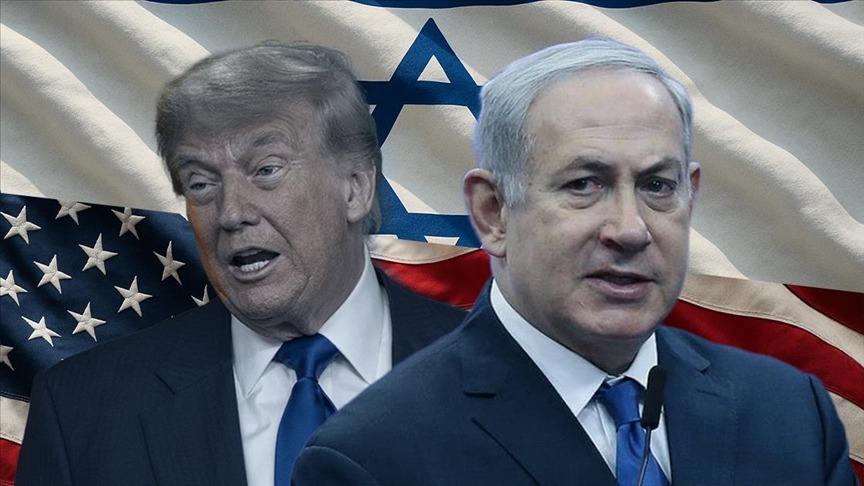
Israeli Prime Minister Benjamin Netanyahu left the White House without any official statement after two consecutive days of meetings with US President Donald Trump. No progress was announced on the main agenda items: ceasefire negotiations and a prisoner exchange in Gaza.
The last-minute addition of the meeting to Netanyahu’s schedule had raised hopes for a potential agreement. While Trump had announced they would discuss the Gaza issue, US Special Envoy Steve Witkoff also made optimistic statements about reaching a deal within the week.
However, according to sources speaking to the Times of Israel, Witkoff postponed his visit to Doha, Qatar, following Netanyahu’s hour-long meeting in the Oval Office with Trump and US Vice President JD Vance. Witkoff was expected to travel to Doha on Tuesday for the ongoing indirect ceasefire negotiations between Israel and Hamas, but a new date for his flight has not been set. The delay suggests that significant hurdles remain before an agreement can be reached.
‘Israeli delegation lacks authority’
Saudi-based Asharq News, citing unnamed sources, reported that the fifth round of negotiations in Qatar ended Tuesday night without any notable progress. A Palestinian official claimed the talks had “reached a stalemate,” alleging that the Israeli negotiating team was merely listening and deferring all decisions to Netanyahu and Strategic Affairs Minister Ron Dermer.
The same official stated that the Israeli delegation lacked decision-making authority and accused Netanyahu of “pursuing a policy of stalling to prevent any kind of agreement.”
In a video statement released after his meeting with Trump on Tuesday, Netanyahu said, “The focus of our talks was the effort to rescue our hostages.” He added, “These efforts are ongoing thanks to the military pressure applied by our soldiers,” and reiterated Israel’s primary goals in Gaza: the release of all hostages, both living and deceased; the destruction of Hamas’s military and governing capabilities; and ensuring Gaza no longer poses a threat to Israel.
Netanyahu also mentioned that he, Trump, and Vance evaluated the results of the joint operation against Iran, stating that “opportunities have arisen to expand the Abraham Accords.”
Sticking points in the agreement
According to four sources familiar with the negotiations who spoke to the Times of Israel, the US is more optimistic than Egypt and Qatar about reaching an agreement this week. Witkoff indicated that three major sticking points may have been resolved in the last three days: Hamas’s demand for a guarantee that the temporary 60-day ceasefire will continue even if permanent truce talks are not complete; accelerating the flow of humanitarian aid into Gaza through UN-backed mechanisms; and the terms of the prisoner exchange.
However, reports indicate that the identities of the individuals to be exchanged have not yet been discussed, as Hamas wants other issues resolved first.
Proposals regarding humanitarian aid suggest that only the UN and neutral international organizations will be permitted to distribute aid in areas from which the Israeli army withdraws. The Gaza Humanitarian Foundation (GHF) would be banned from operating in these zones.
‘Concentration camp’ plan draws backlash
According to US and Palestinian sources, the biggest obstacle to an agreement is the partial withdrawal of the Israeli army from Gaza during the 60-day ceasefire. Israel insists on maintaining a presence in a southern Gaza area it plans to establish as a “humanitarian city.” According to Israel’s plan, this city would be a place where the people of Gaza are gathered and unable to leave after security screenings, effectively creating what critics call a “concentration camp.”
Israeli Defense Minister Israel Katz publicly shared this plan two days ago, but the idea of confining two million people to a small area and restricting their freedom of movement drew significant international backlash. Katz described the plan as a mechanism to protect the population and said humanitarian aid would be distributed there. However, the international community has little confidence in Israel’s humanitarian initiatives, as Gaza residents have faced almost daily attacks from the Israeli army since May while trying to reach aid distribution centers operated by the GHF.
Palestinian sources told the Kan public broadcaster that Katz’s statements undermined the hostage talks in Doha and reduced Hamas’s flexibility regarding the withdrawal of Israeli forces.
Hamas demands written, not verbal, assurances
Two Arab diplomats said that despite US optimism, Egypt and Qatar believe significant gaps remain. The US conveyed to Hamas on Tuesday that Trump had given his personal assurance that the temporary ceasefire would continue. Hamas, however, insists that these guarantees must be in writing.
A Palestinian official, noting that similar promises made during the release of a hostage named Edan Alexander were not kept, said that Hamas no longer trusts verbal assurances.
Israel’s plan to end the war
In a meeting with US House Speaker Mike Johnson on Tuesday, Netanyahu stated that the war would continue until Hamas is completely destroyed. “Some steps will be painful for Israel, and some for Hamas,” Netanyahu said, adding: “We are also prepared to end the war on the condition that Hamas can no longer operate, has no administrative or military capacity, and that Gaza will not pose a threat to Israel. We have a very clear plan on how to do this. We are in agreement with the US on this matter.”
Netanyahu expressed hope for an agreement “as soon as possible” on Israel’s terms, noting this would mean the return of 10 hostages to their homes.
Despite criticism following the deaths of five Israeli soldiers from a roadside bomb in Gaza that same day, Netanyahu argued that the war must continue. However, an unnamed Israeli official stated that Hamas’s response on July 4 set back the negotiations and that reaching an agreement could take longer than a few days.
While no public statement was issued after Netanyahu’s Oval Office meeting, the White House did share a photo showing Netanyahu gifting Trump a red hat inscribed with the words “Trump was right about everything.”
For his part, Trump said in a cabinet meeting on Tuesday, “We will talk almost entirely about Gaza with Netanyahu. This is a tragedy and it needs to be resolved.” Witkoff added, “At the President’s direction, we are meeting with the hostage families. We hope this process will bring lasting peace to Gaza.”
At a dinner on Monday evening, Netanyahu and Trump exchanged praise, lauding their joint attacks against Iran last month. Netanyahu announced that he had nominated Trump for the Nobel Peace Prize, arguing that the strikes against Iran opened the door to regional peace.
Middle East
Sharaa reportedly met with Israeli official in Abu Dhabi
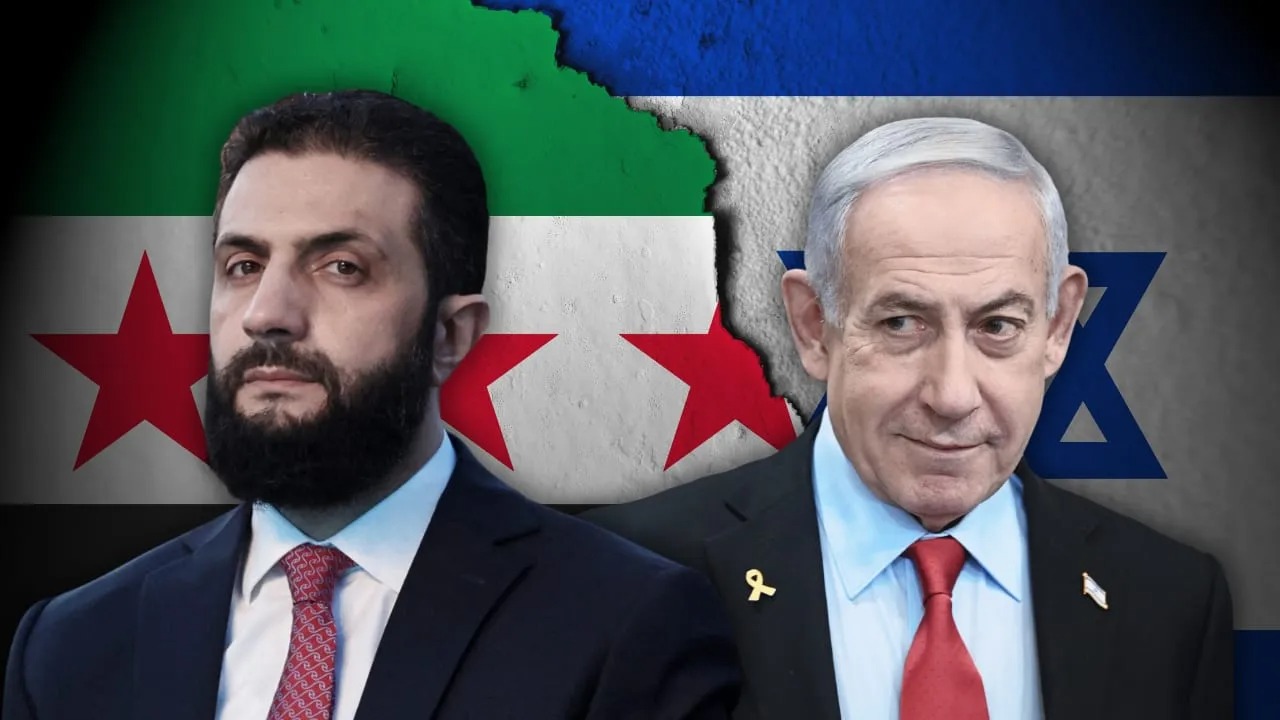
A source speaking to the Syria-based independent news site Al Jumhuriya claimed the meeting between the Israeli National Security Advisor and al-Sharaa was “an important step for Syrian-Israeli negotiations.” According to the source, this was not the first time the two have met.
It was already known that Israel and the government of Ahmed al-Sharaa, which established an interim administration after overthrowing the Assad government with the leadership of HTS, were conducting normalization talks. According to a report by Ynet News based on diplomatic sources, the “quiet” talks between Syria and Israel are not aimed at full normalization but rather at a limited security agreement between the parties.
The report suggests that the common ground for this process is the Syrian leader’s goal of attracting foreign investment and securing the easing of sanctions, combined with Israel’s concerns about the security of its northern borders. The process is expected to be based on a security-focused compromise without full normalization, rather than a warm peace or the opening of mutual embassies.
A source familiar with the matter defined the limits of these expectations, stating, “Anyone who thinks they’ll be eating falafel in Damascus can keep dreaming.”
A potential agreement between the two countries could reportedly include clauses on security guarantees, joint commitments against terrorist activities, limiting Iranian influence, and restricting armed groups in areas near the border. It has been previously claimed that Israel used Syrian airspace for its attacks on Iranian targets, suggesting some form of covert, if not official, coordination between the two nations.
According to Ynet, the Israel-Syria talks are based on the 1974 Agreement on Disengagement, which ended the 1973 war. This agreement defined borders, troop deployments, and surveillance mechanisms. Israeli officials argue that if Syria significantly distances itself from Iranian influence, this agreement could be updated and adapted to address current threats.
Approximately two months ago, US President Donald Trump met with Ahmed al-Sharaa, marking the first meeting between a US President and a Syrian leader in 25 years. A White House statement reported that Trump asked al-Sharaa to normalize relations with Israel and expel Palestinian armed groups. In his remarks following the meeting, Trump stated that the US was considering steps toward normalization with Syria’s new government, a process initiated by this high-level contact. He added that easing sanctions was intended to give Syria a “new beginning.”
Following the historic meeting, al-Sharaa declared, “Syria is determined to be a country open to peace and cooperation. It will remain faithful to every hand of goodwill extended to it.” He continued, “Syria will no longer be an arena for power struggles or a stage for foreign ambitions. We will not allow our country to be fragmented or fall prey to the narratives of the previous regime that sought to divide our people. Syria belongs to all Syrians.”
In the wake of this process, the Trump administration first lifted sanctions against Syria and then announced that HTS would be removed from the US list of terrorist organizations.
-
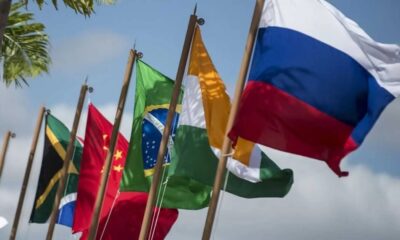
 Diplomacy2 weeks ago
Diplomacy2 weeks agoBRICS internal trade volume hits the $1 trillion mark
-
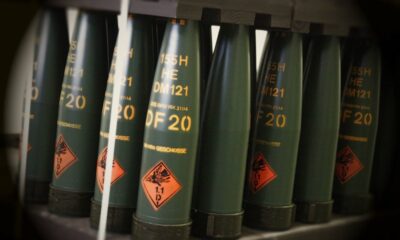
 Diplomacy2 weeks ago
Diplomacy2 weeks agoGerman arms industry expands presence in India amidst geopolitical shifts
-

 Asia2 weeks ago
Asia2 weeks agoJapan’s prime minister skips NATO summit amid alliance strain
-
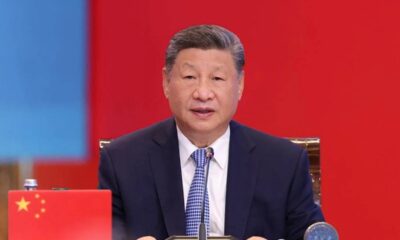
 Diplomacy2 weeks ago
Diplomacy2 weeks agoXi Jinping to miss BRICS summit in Rio for the first time
-
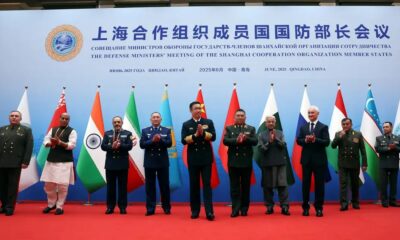
 Asia2 weeks ago
Asia2 weeks agoChina hosts SCO defense ministers on warship amid regional tensions
-
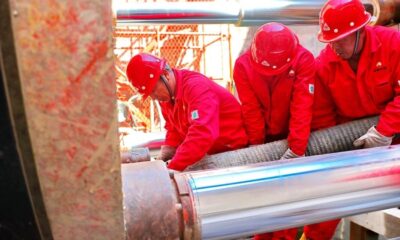
 Russia2 weeks ago
Russia2 weeks agoChina’s energy pivot: Power of Siberia 2 gains traction after Iran-Israel conflict
-

 Interview2 weeks ago
Interview2 weeks agoRetired Vice Admiral Kadir Sağdıç: ‘Closing Hormuz would benefit the US-Israel’
-

 Middle East2 weeks ago
Middle East2 weeks agoUS intelligence contradicts Trump’s claim of destroying Iran’s nuclear program






